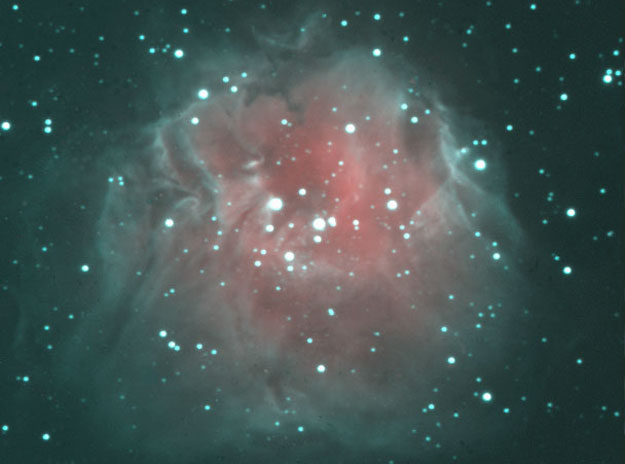Sharpless 212 in Hydrogen and Sulfur

Explanation:
Where do the most massive stars form? Observational evidence
indicates that the outskirts of developing
open clusters of stars
are primary locations.
Pictured above is one such open cluster:
Sharpless 212.
Visible in the image center are massive stars in the
open cluster.
The energetic light from these stars
ionizes surrounding
hydrogen atoms creating an
HII region.
As the hydrogen atoms re-acquire
electrons, they emit the red light highlighted.
Sharpless 212 also contains small amounts of
dust and heavy atoms such as
Sulfur.
The dust efficiently absorbs light, while emission from
Sulfur is highlighted in blue.
Particularly striking and well-defined boundaries that separate the
ionized material from surrounding neutral material
are visible at the edge of the
HII region.
Sharpless 212 spans about 20
light years and lies about 25,000
light years away.
Authors & editors:
Robert Nemiroff
(MTU) &
Jerry Bonnell
(USRA)
NASA Web Site Statements, Warnings,
and Disclaimers
NASA Official: Jay Norris.
Specific
rights apply.
A service of:
LHEA at
NASA /
GSFC
& Michigan Tech. U.

